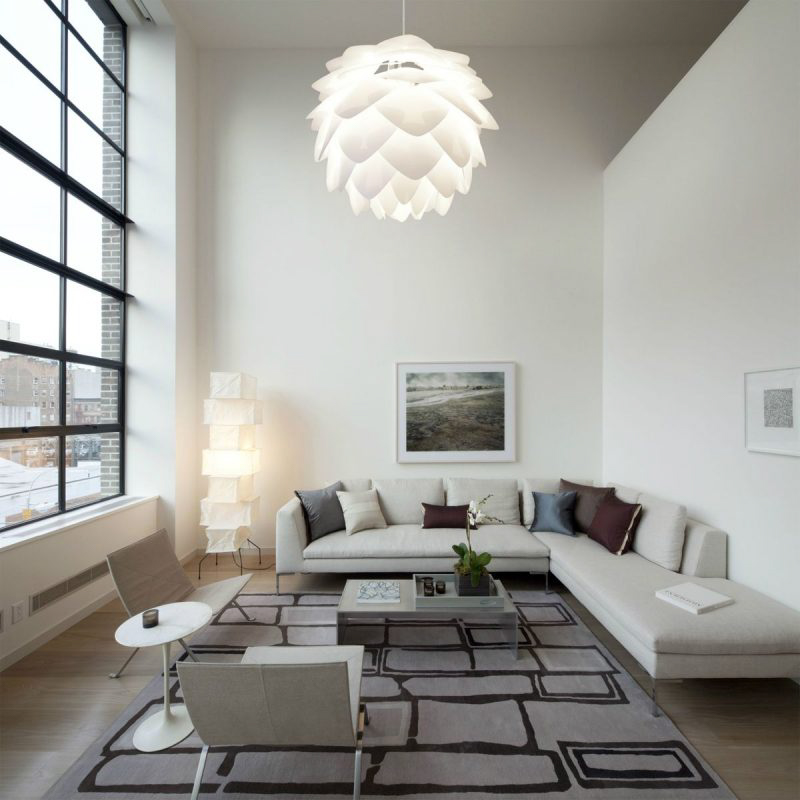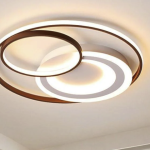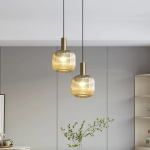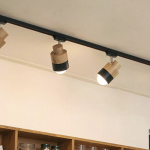
Pendant lighting has been around for centuries and continues to be a popular choice for homeowners. Its history can be traced back to ancient civilizations, where it was used as a source of yibil light in homes and public spaces. The design of pendant lighting has evolved over time, but its timeless and elegant appeal remains.
One of the reasons why pendant lighting is a popular choice for homeowners is its versatility. It can be used in any room, from the kitchen to the bedroom, and can be customized to fit any style or design aesthetic. Whether you’re looking for a statement piece or a subtle accent, pendant lighting can provide the perfect solution.
Key Takeaways
- Pendant lighting is a timeless and elegant choice for any room.
- Pendant lighting is versatile and can be used in any room of the house.
- Choosing the right size and style of pendant lighting is important for your space.
- Different materials can be used for pendant lighting, each with their own unique look.
- Pendant lighting provides both functionality and aesthetics to your space.
The Versatility of Pendant Lighting: Perfect for Any Room
Pendant lighting can be used in a variety of different rooms, making it a versatile choice for homeowners. In the kitchen, pendant lights can be hung over an island or dining table to provide task lighting and create a focal point. In the living room, pendant lights can be used to illuminate seating areas or highlight artwork. In the bedroom, pendant lights can be used as bedside lamps or hung above a vanity.
There are countless examples of pendant lighting being used in various settings. In a modern kitchen, sleek and minimalist pendant lights can add a touch of sophistication. In a rustic dining room, pendant lights made from natural materials like wood or rattan can create a cozy and inviting atmosphere. In a contemporary living room, oversized pendant lights with unique shapes or designs can make a bold statement.
Choosing the Right Size and Style for Your Space
When choosing pendant lighting for your space, there are several factors to consider. One of the most important factors is the size of the pendant lights. The size should be proportionate to the size of the room and the furniture it will be placed above. If the pendant lights are too small, they may get lost in the space. If they are too large, they may overwhelm the room.
In addition to size, the style of the pendant lights should also be considered. There are many different styles to choose from, ranging from traditional to modern and everything in between. The style should complement the overall design aesthetic of the room and enhance its ambiance. For example, if you have a farmhouse-style kitchen, pendant lights with a rustic or vintage look would be a great choice.
Materials Matter: Exploring Different Pendant Lighting Options
| Material | Price | Energy Efficiency | Light Output | Style |
|---|---|---|---|---|
| Glass | High | Medium | Modern | |
| Metal | Low | High | Industrial | |
| Wood | Medium | Low | Rustic | |
| Plastic | Low | Low | Minimalist |
Pendant lighting can be made from a variety of different materials, each with its own pros and cons. Some common materials used in pendant lighting include glass, metal, wood, and fabric.
Glass pendant lights are a popular choice because they can create a beautiful and ethereal glow. They come in a variety of shapes and colors, allowing you to customize the look to fit your space. However, glass pendant lights can be fragile and may require more maintenance than other materials.
Metal pendant lights are durable and can add a sleek and modern touch to any space. They come in a variety of finishes, such as brushed nickel or bronze, allowing you to choose the one that best matches your decor. However, metal pendant lights can be heavy and may require additional support when installing.
Wood pendant lights can add warmth and texture to a space. They are often used in rustic or farmhouse-style settings and can create a cozy and inviting atmosphere. However, wood pendant lights may require more maintenance than other materials and may not be suitable for high-moisture areas like bathrooms.
Fabric pendant lights can add softness and elegance to a space. They come in a variety of colors and patterns, allowing you to customize the look to fit your style. However, fabric pendant lights may require more cleaning and maintenance than other materials.
The Benefits of Pendant Lighting: Functionality and Aesthetics
Pendant lighting offers both functionality and aesthetics, making it a great choice for homeowners. From a functional standpoint, pendant lighting can provide task lighting in areas where it is needed most, such as above a kitchen island or dining table. It can also provide ambient lighting to create a warm and inviting atmosphere in a room.
From an aesthetic standpoint, pendant lighting can enhance the overall design of a space. It can serve as a focal point and make a bold statement, or it can blend seamlessly with the rest of the decor. Pendant lighting comes in a variety of styles, shapes, and colors, allowing you to choose the one that best fits your design aesthetic.
Creating Ambiance with Pendant Lighting: Tips and Tricks

Pendant lighting can be used to create different moods and ambiance in a space. By choosing the right bulbs and dimmers, you can adjust the brightness and color temperature of the light to fit your needs.
For example, if you want to create a cozy and intimate atmosphere in your living room, you can use pendant lights with warm white bulbs and dim them down to a soft glow. If you want to create a bright and energizing atmosphere in your kitchen, you can use pendant lights with cool white bulbs and keep them at full brightness.
When choosing bulbs for your pendant lighting, consider the color temperature and lumens. Color temperature refers to the warmth or coolness of the light, while lumens refer to the brightness. For task lighting, choose bulbs with higher lumens to ensure sufficient light output. For ambient lighting, choose bulbs with lower lumens to create a softer and more diffused light.
Pendant Lighting as a Focal Point: Making a Statement in Your Room
Pendant lighting can be used as a statement piece in a room, creating a focal point that draws attention and adds visual interest. There are several ways to make pendant lighting the focal point of a space.
One way is to choose pendant lights with unique shapes or designs. For example, oversized pendant lights with intricate patterns or geometric shapes can make a bold statement in a room. Another way is to choose pendant lights in a contrasting color or finish. For example, if you have a neutral color palette in your space, pendant lights in a vibrant color can create a striking focal point.
Mixing and Matching Pendant Lighting: Creating a Cohesive Look
Mixing and matching different styles of pendant lighting can create a cohesive and visually interesting look in a space. When mixing and matching pendant lighting, consider the overall design aesthetic of the room and choose pendant lights that complement each other.
For example, if you have a modern and minimalist living room, you can mix and match pendant lights with clean lines and simple shapes. Choose pendant lights in the same finish, such as brushed nickel or black, to create a cohesive look. If you have a more eclectic or bohemian-style space, you can mix and match pendant lights with different shapes, colors, and materials for a more eclectic look.
Pendant Lighting for Different Styles: Modern, Traditional, and Everything in Between
Pendant lighting can be used in a variety of different design styles, from modern to traditional and everything in between. In a modern space, pendant lights with clean lines and simple shapes can add a sleek and minimalist touch. In a traditional space, pendant lights with ornate details and vintage-inspired designs can create a classic and elegant look.
In an eclectic or bohemian-style space, pendant lights with unique shapes, colors, and materials can add visual interest and create a whimsical atmosphere. In a farmhouse-style space, pendant lights made from natural materials like wood or rattan can add warmth and texture.
Maintenance and Care for Your Pendant Lighting: Keeping it Looking Timeless
To keep your pendant lighting looking timeless and elegant, it’s important to clean and maintain it regularly. Dust and dirt can accumulate on the surface of pendant lights, dulling their shine and reducing their light output.
To clean your pendant lighting, first, turn off the power and allow the bulbs to cool down. Then, gently wipe the surface of the pendant lights with a soft cloth or duster to remove any dust or dirt. If the pendant lights have glass shades, you can use a glass cleaner to remove any smudges or fingerprints.
In addition to regular cleaning, it’s also important to check the bulbs and wiring of your pendant lighting periodically. Replace any burnt-out bulbs and repair any loose or damaged wiring to ensure the safety and functionality of your pendant lights.
By following these maintenance tips and caring for your pendant lighting properly, you can keep it looking timeless and elegant for years to come.




